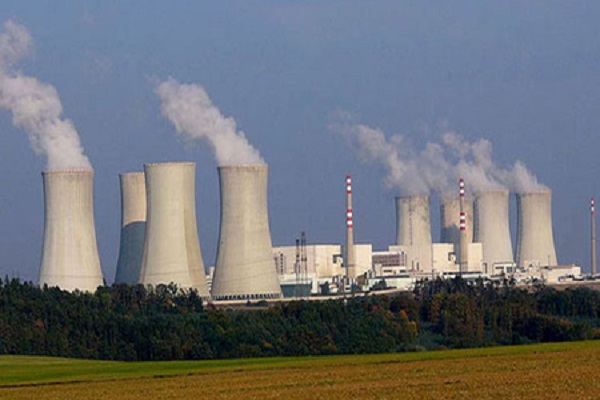Gold trading range for the day is 70645-72005 - Kedia Advisory

Gold
Gold prices settled up by 0.12% at 71,466, supported by increased demand for safe-haven assets as soft economic data strengthened expectations of multiple rate cuts by the Federal Reserve this year. The JOLTS report showed a sharp decline in job openings to a three-year low in July, raising concerns that the upcoming U.S. jobs report might also disappoint. Additionally, U.S. manufacturing contracted moderately in August, with further declines in new orders suggesting continued weakness in factory activity. Traders are now pricing in a 61% chance of a 25-basis-point rate cut on September 18, further fueling gold's appeal. Despite elevated gold prices, central banks' net purchases more than doubled in July to 37 tonnes, signaling strong demand. The Reserve Bank of India notably added 5 tonnes to its reserves, bringing the total for 2024 to 43 tonnes. However, retail demand has softened in India due to price increases, with discounts widening to $8 per ounce. Similarly, demand in China has remained weak amid high prices, despite new import quotas issued by the PBOC. From a technical perspective, gold is experiencing short covering as open interest dropped by 4.04% to 15,066 contracts. Prices rose by 85 rupees, with support at 71,055, and a break below this level could test 70,645. Resistance is seen at 71,735, and a move above could lead prices to test 72,005. The market remains sensitive to further economic data and central bank actions, which could influence gold's trajectory in the near term.
Trading Ideas:
* Gold trading range for the day is 70645-72005.
* Gold recovered due to higher demand for safer assets and soft economic data.
* U.S. manufacturing contracted at a moderate pace in August amid some improvement in employment
* Traders see a 39% chance of a 50-basis-point (bp) rate cut on Sept. 18 and a 61% chance of a 25-bp reduction
Silver
Silver prices settled 0.38% higher at ?83,565, supported by a weakening dollar as the dollar index fell below 101.5. This decline came amid expectations that the Federal Reserve will implement aggressive rate cuts this year. A key factor was the JOLTS report, which revealed that U.S. job openings fell to a three-year low in July, fueling concerns about a softening labor market. These factors aligned with Fed Chair Jerome Powell's dovish pivot at the Jackson Hole symposium, increasing the likelihood of rate cuts. The demand for silver has been driven in part by its critical role in the renewable energy sector, particularly in solar panel production, which heavily relies on silver for photovoltaic cells. However, economic uncertainties and slower growth in major consumer markets like China have cast a shadow over the renewable energy outlook, potentially tempering future silver demand. On the trade front, the U.S. trade deficit widened to $78.8 billion in July, its largest gap since June 2022, which may impact the broader economic outlook. Meanwhile, India's silver imports surged in 2024, nearly doubling in response to rising demand from solar panel manufacturers and the electronics industry, as well as investor expectations of better returns compared to gold. Technically, silver is experiencing short covering, with a 1.33% drop in open interest to 31,968 contracts. Immediate support is seen at ?82,755, with a possible test of ?81,950 on the downside. On the upside, resistance is expected at ?84,200, with a move above that potentially taking prices to ?84,840.
Trading Ideas:
* Silver trading range for the day is 81950-84840.
* Silver rose as dollar fell to 101.5 amid expectations that Fed will deliver aggressive rate cuts this year.
* Prospects of a US recession dampens the demand outlook for materials including silver, prompting traders to rush for safer assets like the dollar.
* Global economic uncertainties and growth concerns in top consumer China have been weighing on the outlook
Crude oil
Crude oil prices fell by 1.15% to settle at 5,851, weighed down by concerns over a weakening global economy, particularly soft data from China. Weak Chinese demand and declining global refining margins have raised fears of refiners processing less crude. U.S. oil consumption in June dropped to its lowest seasonal levels since the pandemic, according to the U.S. Energy Information Administration (EIA), with demand for crude oil and petroleum products falling by 2.7% month-over-month to 20.25 million barrels per day. This marked the lowest June consumption since 2020, despite U.S. crude oil production rising to 13.21 million barrels per day. The International Energy Agency (IEA) maintained its 2024 global oil demand growth forecast but lowered its 2025 estimate due to weaker-than-expected Chinese consumption. However, demand from advanced economies, particularly the U.S., which accounts for one-third of global gasoline consumption, has helped offset some of the declines from China. On the inventory front, U.S. crude oil stocks fell by 0.846 million barrels for the week ending August 23, 2024, less than the anticipated 3 million barrel reduction. Meanwhile, gasoline inventories saw a larger-than-expected drop of 2.203 million barrels, while distillate fuel inventories rose by 0.275 million barrels. Technically, the crude oil market is undergoing long liquidation, with open interest dropping by 8.26% to 20,569 contracts as prices declined by 68 rupees. Crude oil finds support at 5,775, with a break below potentially testing 5,700. On the upside, resistance is seen at 5,972, and a move above this level could lead to prices testing 6,094.
Trading Ideas:
- Crudeoil trading range for the day is 5700-6094.
* Crude oil dropped on concerns about a weak global economy and particularly soft data from China.
* OPEC+ discussing delay to planned oil output hike in October
* U.S. oil consumption slowed in June to the lowest seasonal levels since the coronavirus pandemic of 2020
Natural gas prices declined by 2.27%, settling at ?180.6 due to bearish forecasts for milder weather, which is expected to reduce the demand for natural gas by power generators to fuel air conditioners. Despite this price drop, there was a decrease in output and an increase in natural gas flows to liquefied natural gas (LNG) export terminals. However, gas inventories remain 12% above the normal levels for this time of year, as producers have been injecting smaller amounts of gas into storage for 15 of the past 16 weeks following extremely low prices in the spring. Gas output in the U.S. Lower 48 states averaged 102.3 billion cubic feet per day (bcfd) in September, down from 103.2 bcfd in August. Meteorologists predict near-normal weather across the country until September 11, followed by warmer-than-normal conditions from September 12-18. Additionally, gas flows to U.S. LNG export plants rose to an average of 13.1 bcfd in September, compared to 12.9 bcfd in August. The U.S. Energy Information Administration (EIA) has forecast a larger decline in natural gas output for 2024, expecting production to average 103.3 bcfd, a slight reduction from the previous forecast of 103.5 bcfd. Gas consumption is projected at 89.8 bcfd for this year. U.S. utilities added 35 billion cubic feet of gas into storage last week, raising stockpiles to 3,334 Bcf, 228 Bcf higher than last year. Technically, natural gas is under fresh selling pressure, with open interest increasing by 9.47%. Support is seen at ?176.6, with a test of ?172.7 possible, while resistance is expected at ?187.8, with a move above that potentially testing ?195.1.
Trading Ideas:
* Naturalgas trading range for the day is 172.7-195.1.
* Natural gas dropped amid bearish forecasts for less hot weather than previously expected.
* There was 12% more gas in storage than usual for this time of year.
* Gas output in Lower 48 U.S. states slid to an average of 102.3 billion cubic feet per day in September.
Copper
Copper prices fell by 0.25%, settling at 783.4, pressured by a firm dollar and concerns over demand following weak manufacturing data from China, the largest consumer of copper. China's manufacturing data sank to a six-month low, signaling struggling demand, particularly in the housing sector, which has faced a sharp contraction in completions this year. Additionally, copper inventories in LME-registered warehouses surged by 8,700 tons, reaching 322,950 tons, the highest in five years and double the levels seen in mid-June, mainly due to heavy exports from China. BHP Group, a major copper producer, downgraded its forecast for China’s copper growth to 1-2% for 2024, while also predicting a modest global surplus through 2025. Despite this near-term caution, BHP maintained its long-term outlook that copper will face significant shortages due to the global energy transition, driving prices higher later this decade. Chinese exports of refined copper have contributed to the bearish sentiment, with June exports hitting an unprecedented 158,000 metric tons, although these volumes decreased to 70,000 tons in July. The global refined copper market showed a surplus of 95,000 metric tons in June, up from a 63,000-ton surplus in May, according to the ICSG. This surplus was driven by weaker demand and rising inventories. From a technical perspective, copper is experiencing fresh selling, with a slight gain in open interest by 0.08% to 12,619 contracts. Copper prices find support at 778, and a break below could lead to a test of 772.6. Resistance is seen at 789, with prices potentially testing 794.6 if resistance is breached.
Trading Ideas:
* Copper trading range for the day is 772.6-794.6.
* Copper dropped weighed down by a firm dollar and demand worry, following weak manufacturing data from China.
* China's manufacturing data sank to a six-month low last month, with owners struggling for orders.
* Chile's copper output increased around 2% year-on-year in the month to 443,633 metric tons.
Zinc prices declined by 1.49%, settling at ?261.5, driven by weak factory activity data from China, the largest consumer of zinc. The Chinese manufacturing sector continued to struggle in August, adding pressure on zinc demand expectations. Concerns about the strength of China’s economic recovery lingered, despite sufficient zinc supplies. Additionally, zinc treatment charges have reached historical lows due to tight concentrate supply, prompting smelters to reduce production in July and August. China's zinc output fell for the second consecutive month in July, dropping 9.2% from June to 536,000 tons, marking the lowest monthly level in a year. Output cuts are expected to continue from September to December, potentially reducing production by 30,000 to 40,000 tons per month, accounting for 3-4% of total annual zinc ingot output. Despite these cuts, the global zinc market remains in surplus, though the surplus narrowed to 8,700 metric tons in June, down from 44,000 tons in May. For the first half of 2024, the global surplus stood at 228,000 tons, a sharp decline compared to 452,000 tons during the same period in 2023. Technically, zinc is under fresh selling pressure, with a 14.42% increase in open interest, indicating a bearish sentiment. Immediate support is seen at ?259.4, and a break below could test ?257.1. On the upside, resistance is likely at ?264.8, and a move above this level could see prices testing ?267.9. The market outlook remains weak as China's economic data and production cuts weigh on demand prospects.
Trading Ideas:
* Zinc trading range for the day is 257.1-267.9.
* Zinc dropped as factory activity in China slowed further in August.
* Limited upside due to concerns about China's demand recovery.
* Treatment charges for zinc concentrates have fallen to historical lows.
Aluminium
Aluminium prices fell by 0.99%, settling at 220.45, pressured by concerns over excess supplies as inventories in SHFE-approved warehouses continue to climb, increasing by 36% over the past three months. The widening discount of spot prices to the three-month contract on the London Metal Exchange (LME), currently at $29 per ton, further suggests ample global supplies. According to the World Bureau of Metal Statistics (WBMS), global primary aluminum production reached 5.9031 million tons in June, exceeding consumption, which stood at 5.8059 million tons, resulting in a surplus of 97,200 tons. For the first half of 2024, the global aluminum market saw a cumulative surplus of nearly 720,000 tons. Despite the surplus, LME aluminum inventory has dropped by 22% over the past three months, reaching 877,950 tons, the lowest level since May. China's aluminum production surged in July to its highest monthly output since 2002, with 3.68 million metric tons produced, representing a 6% year-on-year increase. The rise in production was driven by profitable market conditions and new projects coming online in Inner Mongolia. Global aluminum production also saw a 2.4% year-on-year increase in July, according to the International Aluminium Institute. Technically, the aluminium market is facing fresh selling pressure, with open interest rising by 3.11% to 3,751 contracts as prices declined by 2.2 rupees. Aluminium is currently finding support at 218.5, and a break below could lead to a test of 216.6. On the upside, resistance is seen at 222.5, with a move above potentially testing 224.6.
Trading Ideas:
* Aluminium trading range for the day is 216.6-224.6.
* Aluminium dropped pressured by concern about excess supplies as inventories climb in SHFE-approved warehouses
* SHFE aluminium stocks have gained 36% over the past three months.
* Aluminium supply remains elevated, while downstream demand recovery in China is limited
Cottoncandy
Cottoncandy prices declined by 0.34%, settling at 59,000, driven by profit booking after a recent rally. The market had seen gains due to reduced acreage in the current kharif cropping season, with cotton area down by around 9% to 110.49 lakh hectares compared to 121.24 lakh hectares in the same period last year. The Cotton Association of India (CAI) expects this year’s acreage to be around 113 lakh hectares, lower than the previous year’s 127 lakh hectares, as many farmers have shifted to other crops due to lower yields and high production costs. Additionally, the CAI president mentioned that the cotton balance sheet for the next season could tighten due to higher exports, particularly to Bangladesh, which increased from 15 lakh bales to 28 lakh bales. India’s cotton production and consumption are estimated to be around 325 lakh bales each for 2023-24, with imports at 13 lakh bales. Stocks with spinning mills, ginners, and Cotton Corporation of India are around 70 lakh bales, sufficient until the new crop arrives. Globally, the 2024/25 cotton balance sheet has been revised, with reductions in production, consumption, and stocks, largely due to lower output in the U.S. and India and reduced demand in China. Technically, the cotton market is experiencing long liquidation, with a 1.25% drop in open interest to 158 contracts, and prices down by 200 rupees. Cottoncandy finds support at 58,500, with potential for a test of 58,000. On the upside, resistance is seen at 59,500, and a move above could lead to prices testing 60,000.
Trading Ideas:
* Cottoncandy trading range for the day is 58000-60000.
* Cotton dropped on profit booking after prices gained as Cotton acreage trails by 9% at 110 lh
* CAI predicts acreage to be around 113 lh this year, up from 127 lh in the previous year.
* Global cotton production cut by 2.6 million bales; lower in US, India.
* In the global 2024/25 cotton balance sheet, beginning stocks, production and consumption are increased.
Turmeric
Turmeric prices rose by 1.95%, settling at ?13,694 due to tighter supplies in the market and increased buying from stockists. Farmers are reportedly holding back stocks in anticipation of higher prices, adding to the supply constraints. However, the upside remains limited due to increased turmeric sowing. Sowing in key regions like Erode has reportedly doubled compared to last year, with Maharashtra, Telangana, and Andhra Pradesh also showing a 30-35% increase in sowing. This rise in acreage, coupled with low export demand, could lead to further price declines in the future. Turmeric production in 2024 is estimated at 45-50 lakh bags, with an outstanding stock of 35-38 lakh bags. Even with increased sowing, the upcoming crop is expected to reach 70-75 lakh bags, but the lack of outstanding stock means that overall availability may still be tight, which could support prices in the long term. Exports during April-June 2024 dropped by 19.52% compared to the same period in 2023, reflecting weaker overseas demand. On the other hand, imports during the same period surged by 485%, highlighting a potential shift in the domestic market dynamics. In June 2024, exports fell by 18.43% year-on-year, while imports showed a significant rise of 696.31%. Technically, the turmeric market is witnessing fresh buying, with open interest rising by 0.89%. Immediate support is seen at ?13,306, and a break below could test ?12,918. Resistance is expected at ?13,976, and a move above that level could push prices towards ?14,258.
Trading Ideas:
* Turmeric trading range for the day is 12918-14258.
* Turmeric gains amid tighter supplies in the market and emerging buying from stockists.
* However upside seen limited amid news of increased sowing. Ex
* In Indonesia, dry weather has accelerated harvesting, which is currently at peak levels.
* In Nizamabad, a major spot market, the price ended at 14264.2 Rupees gained by 1.07 percent.
Jeera
Jeera prices fell by 2.4%, settling at 25,455, as expectations of higher production weighed on the market. This season, jeera production is projected to increase by 30% to around 8.5-9 lakh tonnes, driven by a substantial rise in cultivation area. The sowing area in Gujarat surged by 104%, and Rajasthan saw a 16% increase. Globally, cumin production has also increased, with China's output doubling to over 55-60 thousand tons. Increased production in Syria, Turkey, and Afghanistan has further added to the global supply, putting downward pressure on prices. Despite the higher production, robust domestic and export demand, along with tight global supplies, are providing some support to prices. Farmers are also holding back their stocks, anticipating better prices in the future. Jeera exports during April-June 2024 rose by 46.56% to 73,770.58 tonnes compared to the same period last year, signaling strong demand for Indian cumin in the international market. Technically, the market is witnessing long liquidation, with open interest dropping by 22.68% to 1,728 contracts. Prices declined by 625 rupees, with jeera finding support at 25,140. A break below this level could see prices testing 24,810. On the upside, resistance is now seen at 25,930, and a move above could push prices toward 26,390. The outlook remains cautious due to the higher production forecast, but demand dynamics and farmer stock-holding behavior could influence price movements in the coming months.
Trading Ideas:
* Jeera trading range for the day is 24810-26390.
* Jeera dropped as the expectation of higher production weighed on the prices.
* However downside seen limited amid robust domestic and export demand besides tight global supplies.
* Turkey anticipates producing 12-15 thousand tons, while Afghanistan's output could double.
* In Unjha, a major spot market, the price ended at 25722 Rupees dropped by -0.23 percent.
Views express by all participants are for information & academic purpose only. Kindly read disclaimer before referring below views























